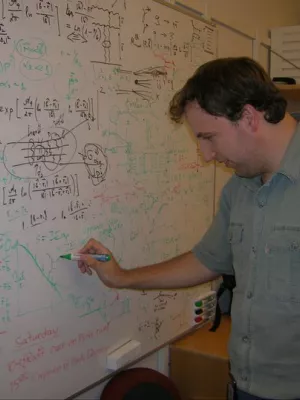
Roman Pasechnik
Senior lecturer

Phenomenology of vector-like leptons with Deep Learning at the Large Hadron Collider
Author
Summary, in English
In this paper, a model inspired by Grand Unification principles featuring three generations of vector-like fermions, new Higgs doublets and a rich neutrino sector at the low scale is presented. Using the state-of-the-art Deep Learning techniques we perform the first phenomenological analysis of this model focusing on the study of new charged vector-like leptons (VLLs) and their possible signatures at CERN’s Large Hadron Collider (LHC). In our numerical analysis we consider signal events for vector-boson fusion and VLL pair production topologies, both involving a final state containing a pair of charged leptons of different flavor and two sterile neutrinos that provide a missing energy. We also consider the case of VLL single production where, in addition to a pair of sterile neutrinos, the final state contains only one charged lepton. We propose a novel method to identify missing transverse energy vectors by comparing the detector response with Monte-Carlo simulated data. All calculated observables are provided as data sets for Deep Learning analysis, where a neural network is constructed, based on results obtained via an evolutive algorithm, whose objective is to maximise either the accuracy metric or the Asimov significance for different masses of the VLL. Taking into account the effect of the three analysed topologies, we have found that the combined significance for the observation of new VLLs at the high-luminosity LHC can range from 5.7σ, for a mass of 1.25 TeV, all the way up to 28σ if the VLL mass is 200 GeV. We have also shown that by the end of the LHC Run-III a 200 GeV VLL can be excluded with a confidence of 8.8 standard deviations. The results obtained show that our model can be probed well before the end of the LHC operations and, in particular, providing important phenomenological information to constrain the energy scale at which new gauge symmetries emergent from the considered Grand Unification picture can be manifest.
Department/s
- Theoretical Particle Physics - Has been reorganised
Publishing year
2021
Language
English
Publication/Series
Journal of High Energy Physics
Volume
2021
Issue
1
Document type
Journal article
Publisher
Springer
Topic
- Subatomic Physics
Keywords
- Beyond Standard Model
- Gauge Symmetry
- GUT
- Quark Masses and SM Parameters
Status
Published
ISBN/ISSN/Other
- ISSN: 1029-8479

